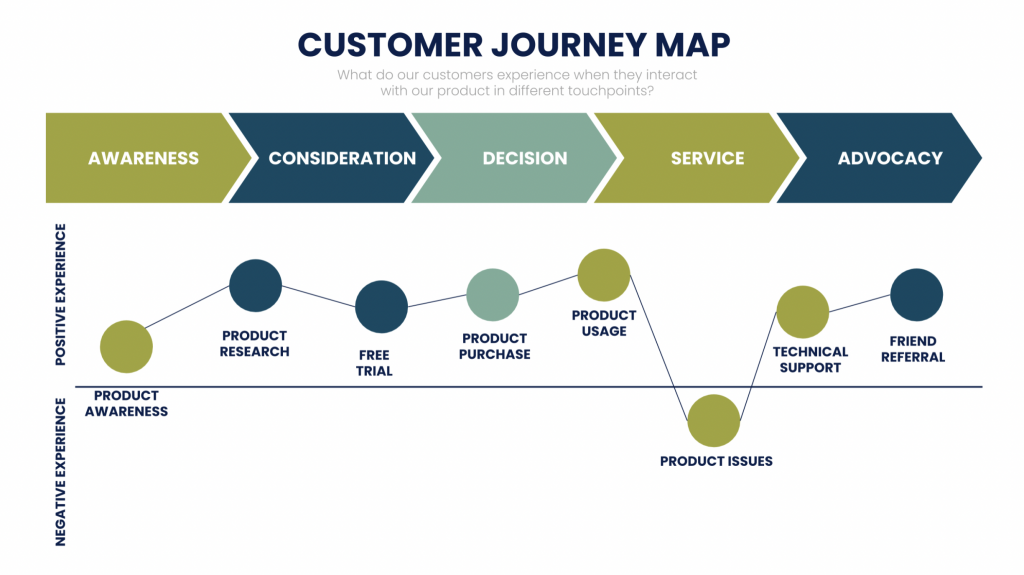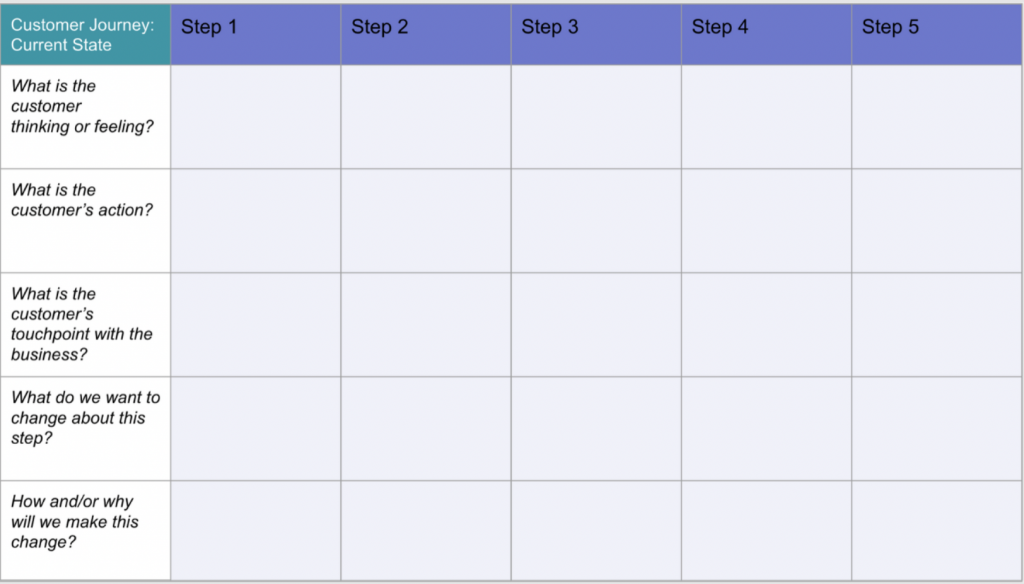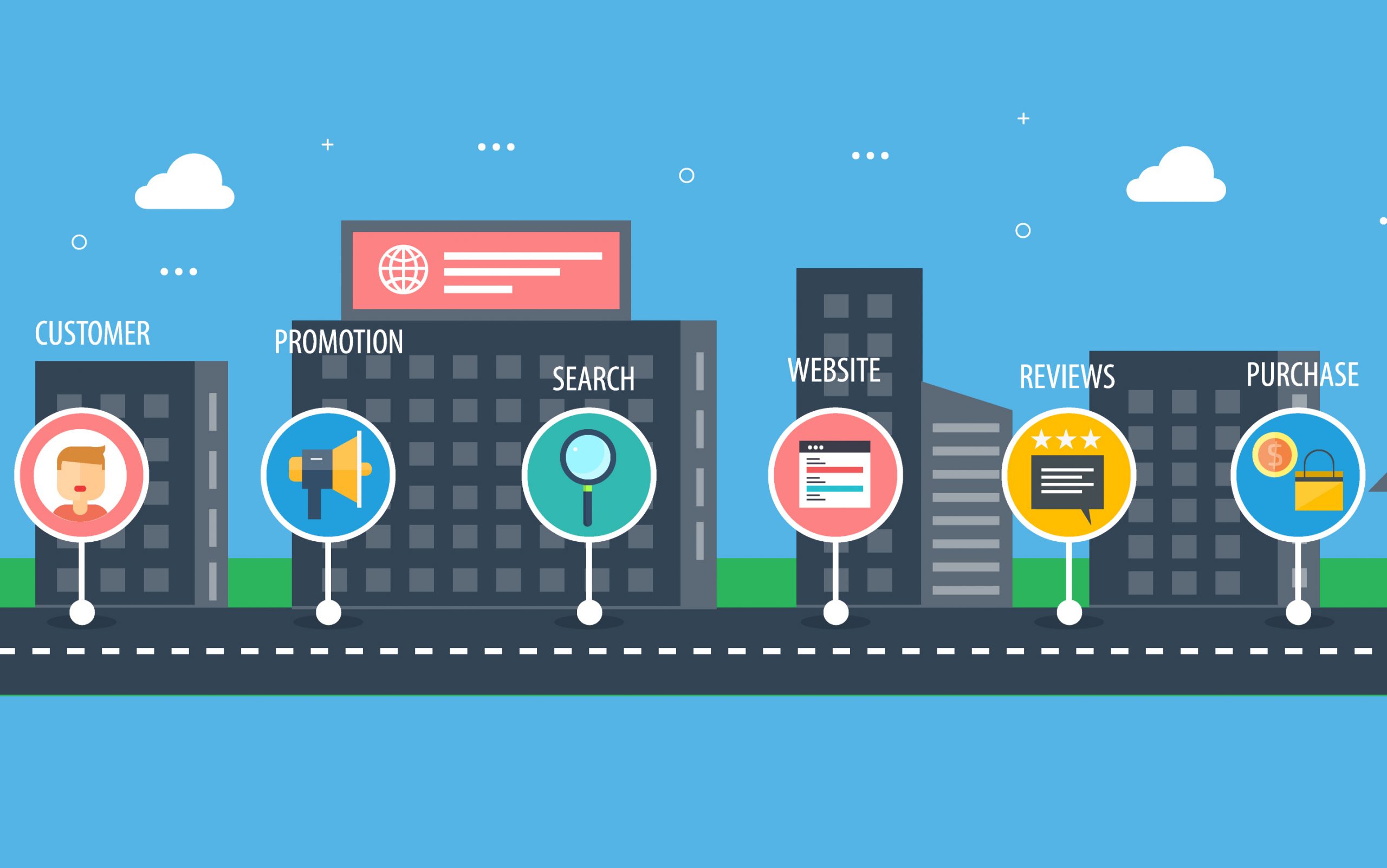When you first attract the interest and attention of a prospect, this begins a journey that you take together. Like taking a real-world trip somewhere, you will have many memorable moments and solidify the relationship.
As a business owner, it’s up to you to make sure that the journey your customers take builds trust, grows their loyalty, and makes them want to continue doing business with you.
In this article, we will look at why it’s important and how to create a customer journey map for your business, and how it can impact the relationship with customer journey maps.
What Is a Customer Journey Map?
A customer journey (sometimes known as a user journey) is your prospect and customer experience from the moment they first hear about your brand, through purchasing your product or service, to after-sales marketing contact points.
You can think of the customer journey as your customer’s entire experience dealing with your business and buying a product or service from your company.
A customer journey map is the visual version of your customers’ journey when engaging with your brand.
Customer journey mapping helps companies to understand every detail of what customers do, think, feel, and do when using their business services, purchasing their products, or interacting with the customer service team.
What Is Customer Experience?
Customer experience – sometimes known as the customer experience journey – refers to a consumer’s personal story when interacting with a business.
Think about the first car you bought or the first time you purchase a cell phone. Both those purchases required a lot of awareness, consideration, and education before making a decision. Along the way, you also likely grew trust with one specific brand or vendor, and that has shaped how you continue to buy today.
Some customer experiences can continue long after the initial purchase because of after-sales services.
Savvy company owners will continue to keep in touch with existing customers to offer product upgrades, promotions, and exclusive offers.
They use feedback and data to understand what a customer experiences before, during, and after the sale has been completed with their brand.
This process is at the core of the customer journey mapping process.

Each customer will go through similar stages as they choose to buy (or not buy) from your company. (Source)
The Six Stages of Customer Journey
Every customer experience is different, but in general, the steps of a typical customer journey include:
1. Awareness — when a prospect first learns about the existence of your product
2. Consideration — when a prospect researches your product
3. Decision — when a prospect decides to buy (or not) your product
4. Service — when a prospect completes a transaction and officially becomes your customer
5. Loyalty — when a customer is loyal to your product over time, buying more services or products
6. Advocacy — when a customer recommends the product to other people through reviews, referrals, or recommendations.
Why Is a Customer Journey Map Important?
There are many reasons that creating a user journey map is beneficial for your business.
Building a customer journey map helps you better empathize with your customer at each step of the journey. After all, your view of the buying process is very different from theirs.
By mapping out the customer journey, you can put yourself in your customer’s shoes.
While not all customer experiences are the same, having a customer journey map helps you provide the best possible customer experience with consistency. It takes time and practice to create customer journey maps that are clear and effective, but it’s worth the effort.
How To Create a Customer Journey Map
If you google Customer Journey Map, you can see some clear examples and notice that they all contain similar elements.
To get the most from your Customer Journey map, here are some simple tips to get started with:
Have a Clear Objective
You can’t hit a target you can’t see, so always begin with the end in mind.
Are you creating a buyer journey map to improve customer experience, generate more sales, or eliminate customer complaints? Knowing this in advance will help you shape your research and data and review process accurately.
Identify Customer Touch Points
Customer experience touchpoints are defined as a place (physical or virtual) where customers first interact with your business. It could be as broad-reaching as a billboard, a targeted social media post, a clink on a website from a Google search results page.
Keep in mind that most prospects will go through multiple touchpoints in their user journey. The better you can identify the touchpoints your customer will go through, the better you can understand your customer’s journey.
Create Buyer Personas
Of course, every single customer is different and comes from diverse backgrounds, beliefs, and expectations. But to help you better categorize and measure your results, it can be a good idea to create a customer buyer persona (sometimes called a customer avatar).
Creating a customer persona for a corresponding customer journey map ensures your solutions are personalized to that customer type. You may have one ideal buyer persona or several depending on your range of products and services.
Improve Customer Experience
Other than helping customers accomplish their goals, another crucial part of a customer journey map is to make the customer experience better.
To do this, you develop empathy and consider your customer’s emotions. When you get into the mind and heart of a customer, you’re able to come up with strategies to improve your customer service processes from the beginning to the end.
Some things you can do to improve customer experience include:
- Addressing technical pain points (website loads slow, tech jargon, difficulty contacting customer service, etc.)
- Understand customer motivation (personal, professional, social)
- Acknowledge positive and negative emotions (curiosity, frustration, excitement)
- Look for educational gaps and misconceptions

Site such as Hubspot have free tools available to help you get started mapping out your customer journey and experience. (Source)
Getting Started with a Customer Journey Map
The good news is that tre are many online resources for customer journey mapping templates available for free.
Using a ready-made customer journey examples saves time, and as you go you can refine and customize it to suit your business.
The most important aspect of any customer journey map is that you find ways to measure data points at each step. Knowing what results you want to see, and how to read the data is an essential part of tracking the reality of what customers experience when working with your brand.
And like any process in your business, the customer journey experience should be reviewed at least once a year to ensure no new challenges or opportunities have arisen that you need to include.
And of course, if you need help planning out your buyer personas, or customer journey, then we are here to help.














